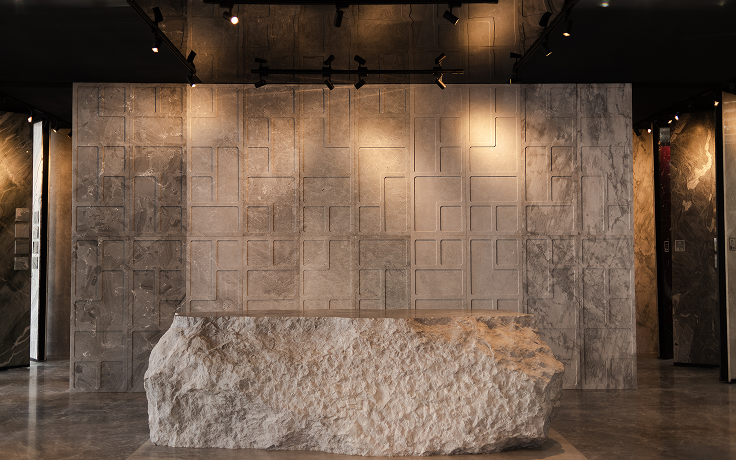Granite: the volcanic stone that revolutionized the use of exotic materials in architecture
Granite is an igneous stone formed from the slow cooling and solidification of underground magma at great depths. It is one of the most common stones in the earth's crust and is widely used in construction, architecture, decoration and interior design due to its beauty, durability and strength.
It brings in its composition, mainly three minerals: quartz, feldspar and mica. The proportion of these minerals varies, which results in different colors and patterns. Generally, granites are found in gray, white, black, red, green, yellow and brown colors.


Brazil is a major producer of granite, with examples ranging from classic patterns to the most exotic. This wide variety of materials contributes to the country's prominent position in the global ornamental stone market.
The main granite deposits in Brazil are in Espírito Santo, Minas Gerais, Bahia and Ceará. In these regions, materials of different colors and grains are extracted, which are widely valued in the international market, such as Amarelo Oriental, Preto São Gabriel, Dalla White, Azul Bahia and others.

Main applications of granite
Granite is generally the most chosen natural stone for countertops because of its durability, stain resistance, and elegant appearance. It adds a sophisticated touch to kitchens, bathrooms and gourmet areas, as well as being easy to clean and maintain over the years.
The use of granite in internal and external floors and coverings is also widespread throughout the world. Its resistance to wear and abrasion makes it an ideal choice for high-traffic areas such as corridors, halls and commercial areas such as shopping malls and airports. Constructions from various parts of the world use Brazilian granite because of these advantageous properties.


In external areas, granite is widely used on facades, pool edges, columns, window frames and cornices. With different finishes, the stone transforms into infinite possibilities.
Granite is still used in the production of works of art and sculptures, tables, chairs, benches, sideboards and other design and decorative objects, which take advantage of the beauty and exclusivity of natural stones.

In addition to the traditional use in tombs and headstones, many monuments and memorials around the world are also made from granite.

Classic and current projects that use granite

Granite
Granites, marbles and quartzites have distinct differences in terms of composition, physical characteristics, appearance and applications. Check out the main points about granites:
Composition - Granite is an igneous stone that originates from the slow cooling of underground magma. It is composed of several minerals, including feldspar, quartz and mica, which form a crystalline matrix.
Hardness and durability - It is considered one of the hardest and most resistant stones on the ornamental stone market. Its hardness makes it more resistant to scratches and damage, and it is also less susceptible to stains and acids. This makes granite a popular choice for applications that require durability, such as kitchen countertops, bathrooms, facades and high-traffic floors.
Appearance – Granite is known for its granular textures. Its color palette is quite diverse, covering a wide range of tones, including whites, blacks, reds, greens, yellows, browns and many others.
Granites x business market
Granites vary in price depending on the rarity and quality of the material. Generally, granite has an excellent market value, being accessible to a large part of the population. In some cases, of course, high-quality and rare granites may be more expensive, but the durability and sustainable factor make a difference in the long term, making the investment worth it.
It is possible to find classic granites on the market with higher added value, as they have undergone finishes that are new to the market, such as concrete, in the case of Itaúnas, and the matte and velvet of Alpha.
Granite and sustainability
Currently there are several ways to reuse and recycle granite waste generated during production and disposal.
Waste from cutting and sawing, for example, can be collected and reused in other applications, such as floor covering, mosaic manufacturing, production of decorative objects, furniture and even in the manufacture of bricks and blocks.
Granite can also be crushed into smaller pieces to be used in civil construction aggregates, such as gravel for roads, crushed stone, concrete bases, drainage and landfills. This helps reduce the need to explore new natural resources.
In landscaping, granite fragments can be used as retaining walls, garden paths, fountains and various other decorative details and even works of art.














